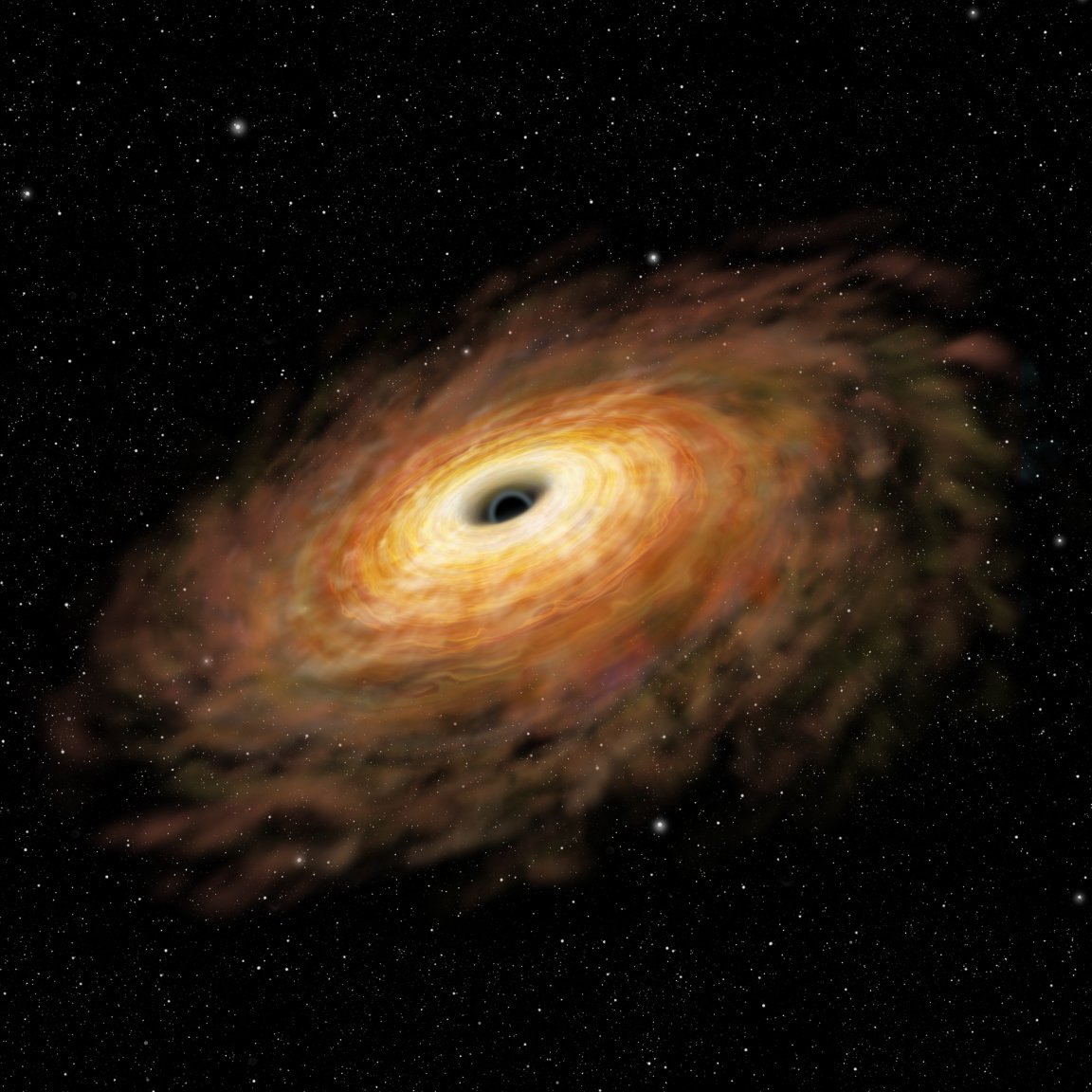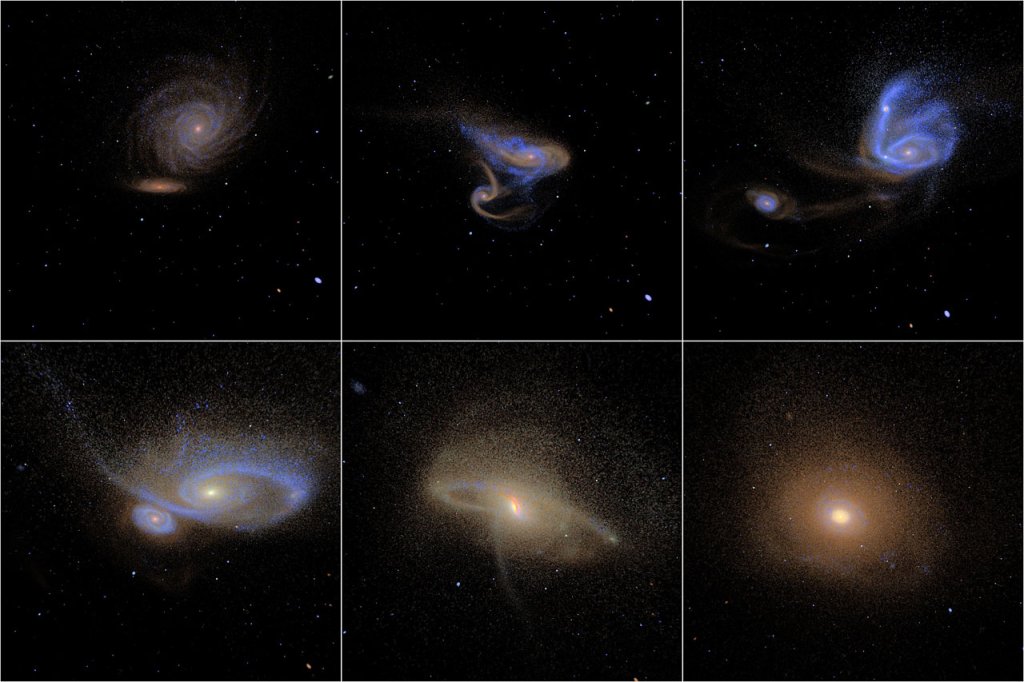
Researchers at the University of Michigan have discovered the smallest black hole observed at the center of a galaxy, RGG 118, 340 million light years away. This “teeny supermassive black hole” is a more significant discovery than you might think.
A supermassive black hole is thought to be at the center of every massive galaxy, including the one we live in. This small black hole has 100,000 times less mass than the typically observed large black holes at the center of galaxies. The small black hole is actually active and it is eating stellar material at the rate the largest supermassive black holes do. The supermassive black hole at the center of the Milky Way is inactive, like many supermassive black holes at the center of their larger and older galaxies.

Visual simulation of merging galaxies
ESA/Hubble
RGG 118, known as a dwarf galaxy, is small because it didn’t merge with other galaxies. This is how many larger and older galaxies have gotten so massive. So RGG 118 could tell scientists a lot about galaxy formation and our early universe. We also don’t really know how supermassive black holes form. Enormous amounts of mass have to be concentrated in a small enough area. The main theories suggest they form from dust clouds or the collapse of massive stars. Researcher Elena Gallo says, “This black hole in RGG 118 is serving as a proxy for those in the very early universe and ultimately may help us decide which of the two is right.”
This ‘little’ object could be the key to unlocking an astronomical enigma.

The highest resolution image of RG 118 thus far.
NASA/CXC/Univ of Michigan/V.F.Baldassare, et al
Sources: University of Michigan, The Astophysical Journal Letters
Images: ESA/Hubble, NASA/CXC/Univ of Michigan/V.F.Baldassare, et al